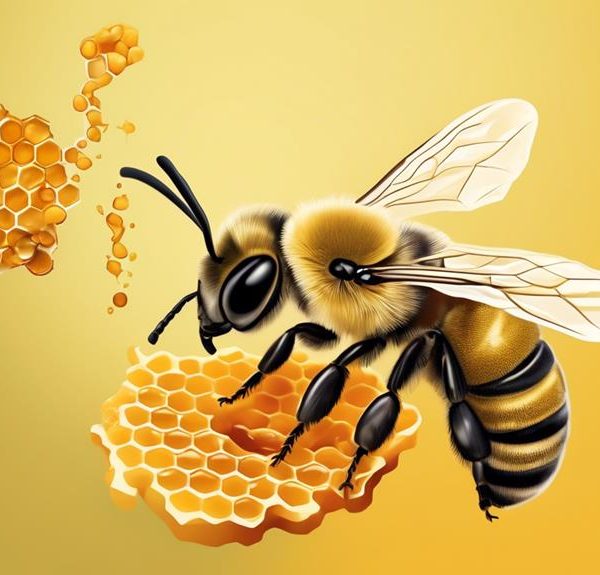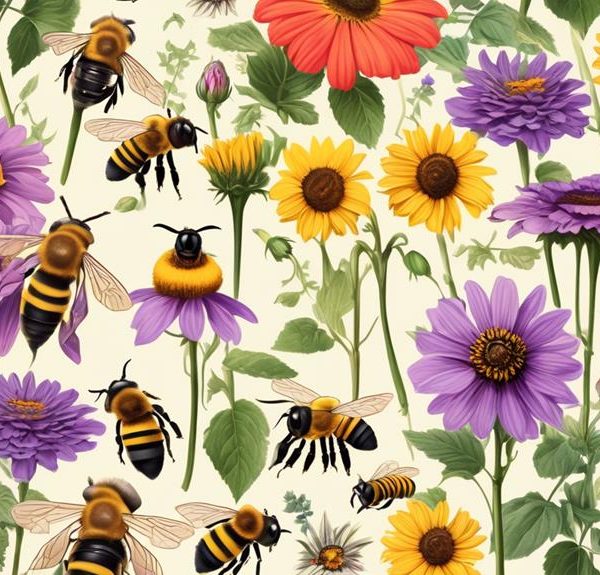Uncover the surprising truth about whether the industrious leaf cutter bee can sting, in this exploration of their unique behavior and characteristics.
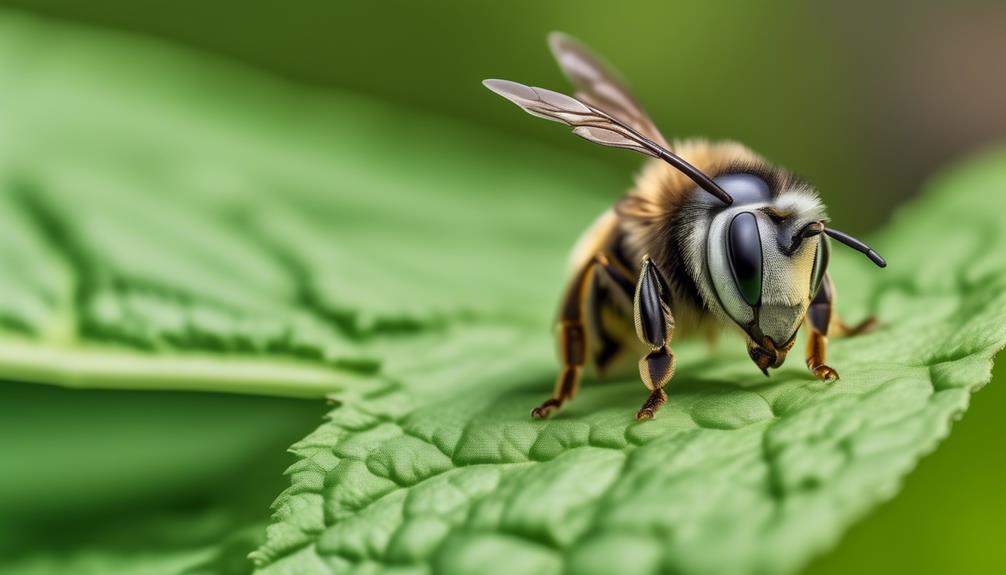
Can Leaf Cutter Bees Sting
As you meander through the labyrinth of the insect world, you might stumble upon the leaf cutter bee, an intriguing character with a reputation for precision and hard work. You've likely marveled at their perfect, circular cutouts in leaves but have you ever wondered about their sting?
Can these tiny leaf artists pack a punch, or are they as harmless as their delicate craftsmanship suggests? You're on the brink of discovering the truth, which might surprise you.
Key Takeaways
- Leaf cutter bees have a stinger, but they are not aggressive and rarely sting.
- Their sting is defensive and less painful compared to a honey bee sting.
- Leaf cutter bees do not leave their stinger behind and can sting multiple times without dying.
- Allergic reactions to leaf cutter bee stings are possible, especially for individuals allergic to bee stings.
Understanding Leaf Cutter Bees
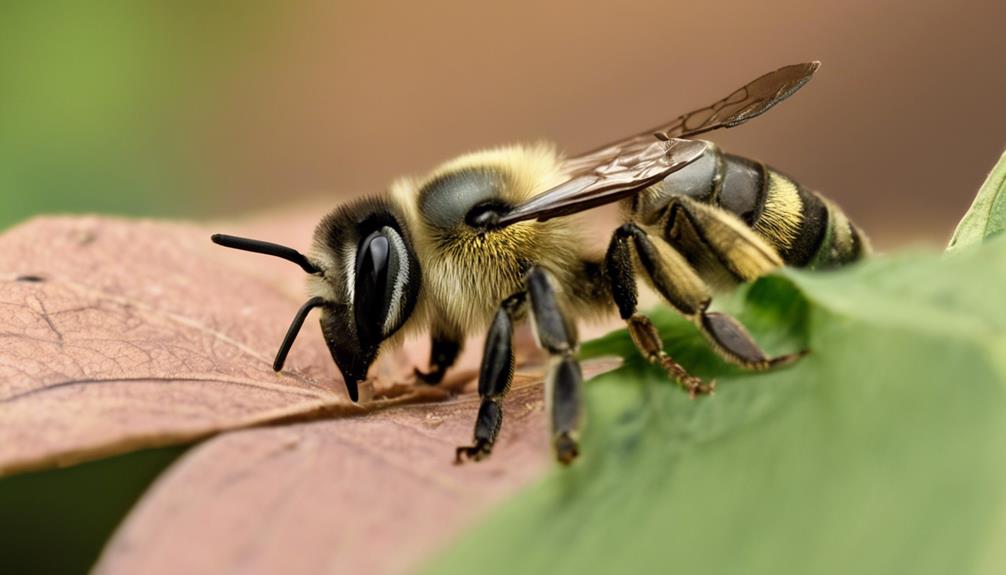
To fully grasp the nature of leaf cutter bees, you need to delve into their unique behavioural patterns, physical attributes, and ecological roles.
Unlike honey bees, these solitary bees don't live in hives but in individual nests. They're known for their characteristic behaviour of cutting neat, circular pieces from leaves, which they use to construct their nests.
Physically, leaf cutter bees are slightly smaller than honey bees, typically measuring about 1/4 to 1/2 inch long. They're usually black, with bands of white hair across their abdomen. These bees also possess large jaws, which they use to cut leaves efficiently.
Ecologically, leaf cutter bees play a vital role as pollinators. As they move from flower to flower collecting pollen for their larvae, they inadvertently help to pollinate plants. This process is essential for plant reproduction and hence, the overall health of our ecosystems.
While they may sting if threatened, you'll find that leaf cutter bees are generally harmless and more interested in plants than people. Understanding these elements helps you appreciate these industrious insects and their contribution to our environment.
Life Cycle of Leaf Cutter Bees

In understanding the life cycle of leaf cutter bees, you'll find it's a fascinating process that begins when the female bee lays her eggs in the nests she's meticulously constructed from leaf cuttings. This nesting period occurs typically during summer months when leaves are abundant.
Each nest, a marvel of insect architecture, contains several cells, each housing an egg. The mother bee provisions each cell with a paste-like mixture of nectar and pollen, providing sustenance for the larvae upon hatching. Once the egg is laid and provisions stored, she seals the cell with a leaf cutting, creating a secure environment.
After roughly a week, the eggs hatch into larvae, which feed on the stored provisions. They undergo several molts as they grow, eventually spinning a cocoon around themselves and entering the pupal stage. Remarkably, they overwinter in this state, metamorphosing into adult bees within their protective cocoons.
Spring's arrival triggers the emergence of the adult bees, ready to mate and repeat the cycle. It's a meticulous, cyclical process that's integral to these bees' survival. Understanding it not only illuminates the life of leaf cutter bees but also sheds light on complex insect behaviors.
The Sting: Myth or Reality?
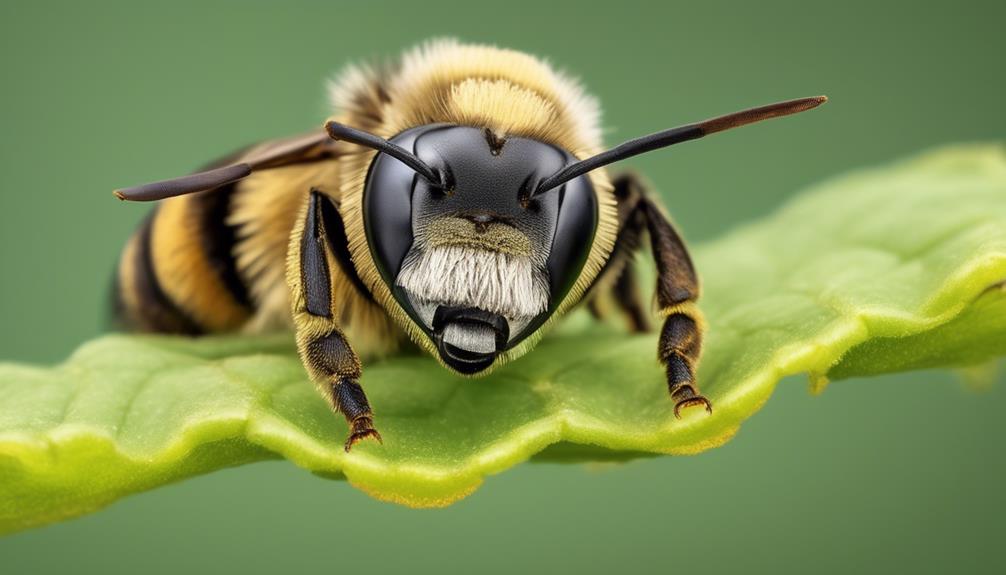
Despite popular belief, leaf cutter bees do possess a stinger, but you're unlikely to experience a sting unless you handle them roughly or threaten their nests. This sting is a defensive mechanism, and it's important to note that these bees aren't aggressive.
Let's delve into some characteristics of the leaf cutter bee's sting. Here's a comparative table:
Aspect | Leaf Cutter Bee | Common Honey Bee |
|---|---|---|
Sting Frequency | Rarely stings | More prone to sting |
Pain Level | Less painful | More painful |
Stinger | Does not remain in skin | Remains in skin and bee dies |
In contrast to the common honey bee, a leaf cutter bee's sting is less painful and they rarely sting. Additionally, they don't leave their stinger behind, meaning they can sting multiple times without dying, unlike honey bees.
You're more likely to get stung by a honey bee than a leaf cutter bee. However, if you're allergic to bee stings, a sting from a leaf cutter bee could still cause an allergic reaction. Always respect their space, and they'll likely do the same for you.
Leaf Cutter Bees and Humans
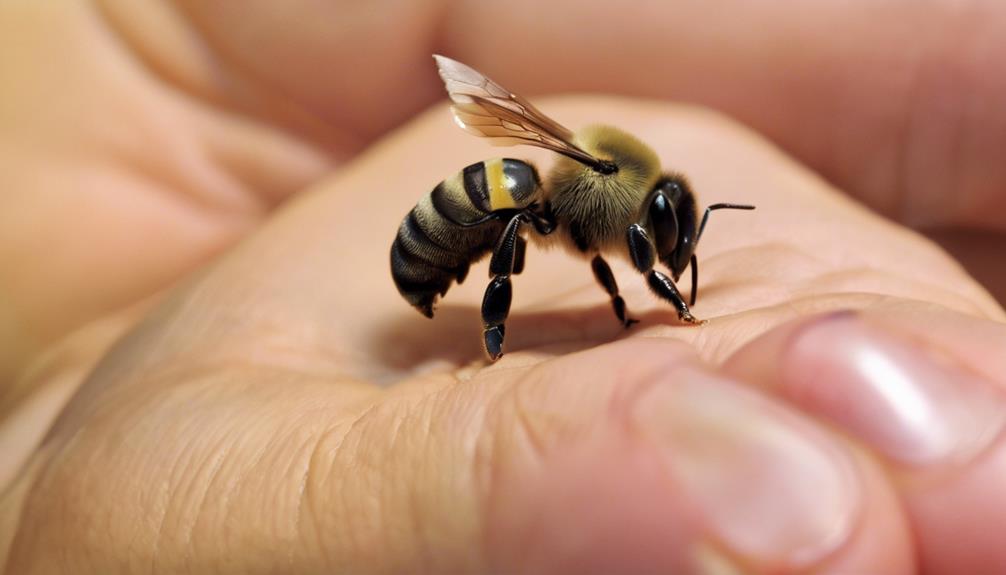
Often, you'll find leaf cutter bees coexisting peacefully with humans, posing no significant threat unless provoked. These solitary bees are docile by nature and aren't usually aggressive. They'll only sting if they feel threatened, and even then, their sting is less painful than that of a honey bee.
Leaf cutter bees, named for their characteristic behavior of cutting neat, circular pieces from leaves, don't build communal hives like honeybees. Instead, they nest in soft, rotting wood or thick-stemmed plants, making them a common sight in gardens and parks.
While you might worry about the damage to your plants, it's important to understand that these bees have a positive impact on the environment. They're prolific pollinators, aiding in the reproduction of plants. Studies have shown that they're even more efficient at this task than honey bees.
However, if their presence becomes a nuisance or a threat, professional pest control can be sought. Remember though, it's essential to ensure humane, bee-friendly methods are used to maintain the crucial role they play in our ecosystem.
Importance of Leaf Cutter Bees in Ecosystem
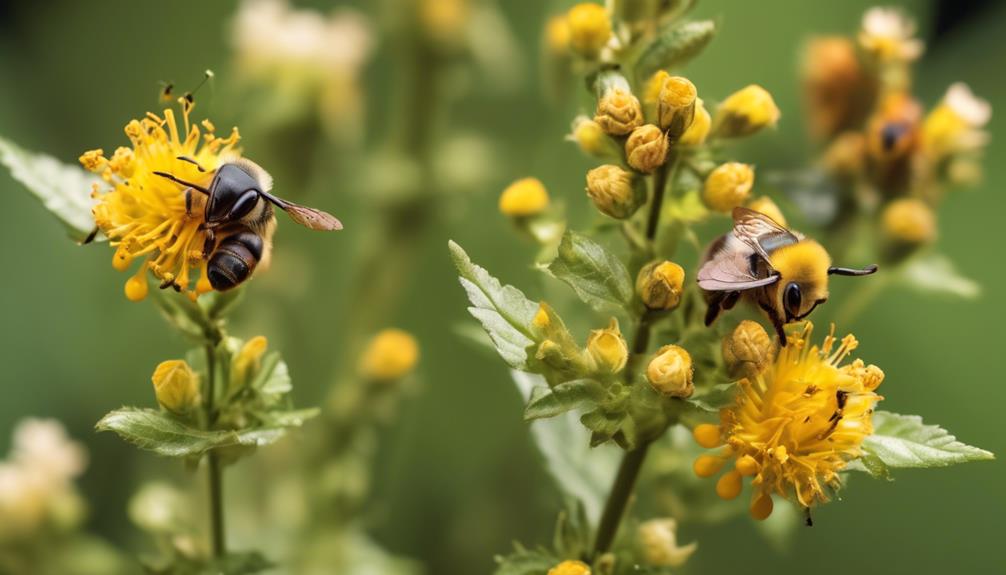
Unbeknownst to many, leaf cutter bees play a vital role in our ecosystem, acting as powerful agents of pollination. They're in a league of their own, capable of pollinating plants that honey bees can't. They're also solitary bees, meaning they don't live in colonies, making them less likely to sting unless threatened.
Benefit | Impact |
|---|---|
Pollination | Leaf cutter bees are highly efficient pollinators. Their unique method of carrying pollen on their abdomen, as opposed to their legs, leads to more effective pollination. |
Diversity | Their ability to pollinate plants that other bees can't, supports plant diversity, which in turn, supports biodiversity in the ecosystem. |
Food Production | Their pollination skills are critical for food crops, aiding in the production of fruits, vegetables, and nuts. |
Conclusion
So, can leaf cutter bees sting? Yes, they can, but it's rare and generally less painful than a honeybee's.
It's also important to remember, you're more of a friend than a foe to these bees. They play a pivotal role in our ecosystem, contributing significantly to plant pollination.
So, the next time you spot a leaf cutter bee, don't panic. Instead, appreciate the hard work they're doing to keep our environment thriving.

